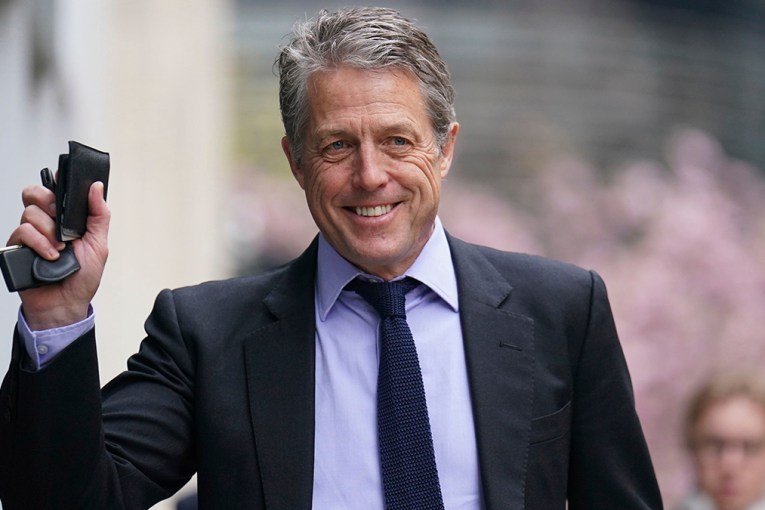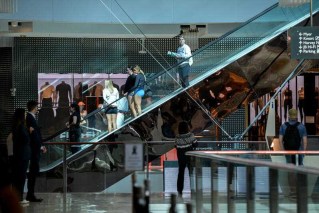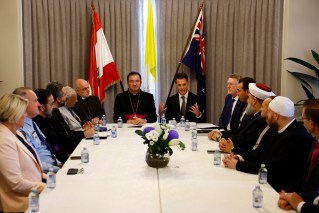State and federal governments are under fire for lethargic beginnings to the vaccination rollout, with targets of four million jabs by April now near-impossible amid questions of why things are moving so slowly.
New South Wales Premier Gladys Berejiklian is concerned the vaccination program could take “months longer” than expected, calling for more information from Canberra, while the federal government is privately pointing the finger at the states for not working faster.
“This is not a race,” said federal health department secretary Brendan Murphy, as he admitted on Wednesday some states were “a bit slower starting up”.
Four million goal near-impossible
Some 1.3 million COVID vaccines have arrived in Australia from overseas, Prime Minister Scott Morrison said on Wednesday.
However, just 100,000 have been given – just 7 per cent of the total.
Some of that shortfall is due to the federal and state governments holding back doses to ensure supply for a second jab of the two-dose Pfizer and AstraZeneca vaccines.

Mr Morrison in Canberra on Wednesday. Photo: AAP
But even accounting for an extra 100,000 ‘second doses’ on top of the 100,000 already given, that still means some 1.1 million vaccines are sitting in warehouses, not in people’s arms.
Mr Morrison defended the speed of the rollout.
He said the government did not plan to “herd” people into mass vaccination sites, adding “what matters most is doing this safely”.
“We’re moving as quickly and as safely and as surely as we can,” he said.
However, the PM would not recommit to a previous goal of reaching four million jabs by “early April”.
For that goal to be reached, Australia would need to give some 140,000 vaccinations each day – more than has been administered in the past 16 days combined.
Vaccination data in short supply
Questions are also being raised about transparency of data, with state governments agreeing at last week’s national cabinet to only release vaccination numbers once a week.
That stands in contrast to COVID test, case and death numbers, which are reported daily by the states and the federal government.
Queensland and Victoria, particularly, were lambasted last week when initial numbers showed they only administered 22 and 30 per cent respectively of the vaccine doses they had been delivered.
The latest numbers released by states, and collated by the federal health department, only show successful vaccinations – not doses delivered.
A senior federal government source said they were unsure why some states gave so few vaccinations, while other – like NSW and Tasmania – delivered a far higher number.

Mr Morrison got his vaccine in February. Photo: AAP
“What are they doing?” they told The New Daily.
“The supply is there.”
TND understands the federal government is unhappy and confused with how some states are managing their supplies.
Doctors have also raised concerns about the logistical framework, and how they are paid to give jabs.
A senior federal health department source said they hoped to be able to report vaccine numbers on a more regular or daily basis in coming days.
They noted it had taken some time in the beginning of the pandemic to collate COVID test and case data, and present it on a daily basis.
Mr Morrison said last week he wanted “a daily level” of reporting, but conceded “data flows are still being confirmed between the states and the territories and the Commonwealth.”
The latest available data, as of March 7, showed 86,369 vaccinations. That included:
- 23,995 in Commonwealth aged and disability care facilities
- 21,763 in NSW
- 14,422 in Victoria
- 8300 in Queensland
- 7840 in Western Australia.
The health department was not able to provide a more current update by publication time.
Feds need to ‘advise us’: Berejiklian
Ms Berejiklian said her state wants to keep running specialised vaccination hubs – which were meant to be temporary – to meet demand.
“We would like the option of being able to continue those hubs … That will certainly provide some support to the GP network as well, and will ensure we save months,” she said on Wednesday.
“It’s likely to take months longer than what was anticipated, to get the rollout to the number of people we’d hoped.”

Australia’s vaccine roadmap. Photo: Department of Health
Ms Berejiklian said NSW was not among states objecting to sharing statistics, but that her fellow premiers needed more guidance from the federal government.
“Everyone is trying their hardest,” she said.
“The federal government is responsible for the rollout. That’s a challenge, something for them to advise us on.”
Queensland has come under fire for its slow vaccination rates, with the state’s health department claiming last week it was being “picked on”.
Premier Annastacia Palaszczuk asked “for people’s patience”.
Professor Brendan Crabb, CEO of the Burnet Institute for medical research, said a faster vaccine rollout would be ideal but that things were “not desperate”.
“We have enough of three good vaccines to immunise us all three times over, this year. We are spoiled for choice to the point where it’s embarrassing,” he told TND.
“My bigger concern, and seriously a higher priority than vaccinating a COVID-free population like ours in a hurry, is to get the numbers down in places where there is a lot of virus. This is what drives the evolution of fitter viruses.”
He said that helping poorer countries get vaccinated would be more important in the long term, to potentially root out more deadly variants.
“Self-interest should drive this, not just a good moral code. The main message is to throw everything at getting the numbers down with public health measures and vaccines,” Professor Crabb said.









